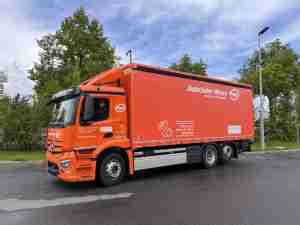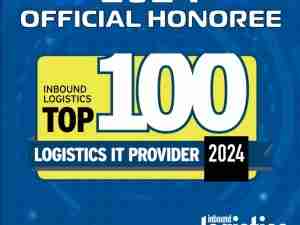If you ask Philip Obal, President of Industrial Data & Information Inc. (ID&II) what the most significant issue facing 3PLs is, he'll say it is the software. Considering the keen competition between 3PLs for the top tier "Fortune 500" type clients, Obal's enthusiastic plunge into the subject of software selection issues might seem extreme for 3PL executives. But Obal knows what he is talking about. You might say he wrote the book on WMS (warehouse management software) for 3PLs. Recently, Obal's company published a book entitled, "Who's Who in 3PL WMS Software," that lists and evaluates the software on the market. In an interview with the AJOT Obal talked about the impact that software has recently had on 3PLs and the new directions that WMS is heading.
Among the trends driving innovation in 3PL software development is the nature of the business itself. Obal says there is a trend among 3PLs' clients to use a number of 3PLs rather than just one all-purpose service provider. Part of the reason for this is the global nature of today's supply chain. Clients want to "mix and match," and ultimately 3PLs & 4PLs must collaborate under one service umbrella to satisfy their mutual customer.
One of the software challenges for the 3PLs, according to Obal, is getting beyond simply billing to "customer profit & loss functionality."
It is almost a pet peeve for Obal. "WMS is great at billing'just about any system can tell you about moving this or that or what's in storage, but they can't tell you about how much a client is costing," Obal said. "What is the cost of each task" is the elusive data needed to know whether a 3PL is really making money with a given large client. In short, what clients are profitable.
"This is the steak and sizzle," for a 3PL Obal says of the profit and loss calculator. The system tracks some 40 indices that enable a manager to "drill down" to determine which tasks are profitable. The system is updated constantly which is a plus over the traditional use of a market analyst that assembles data monthly or quarterly. In a sense, the time and money spent on an analyst can be eliminated, or at least reduced, with a real time profit and loss calculator. The profit and loss analysis can produce transaction details such as each storage charge & cost, or each task charge & cost. With this information, a 3PL can have proper documentation to get a rate increase in order to stay profitable.
Although 3PLs might be a hard sell for software vendors, as Obal notes, once the sale is made, "3PLs are extremely loyal." The trouble for 3PLs' loyalty is that most software vendors release a new major version once or twice a year. The entry cost for a 3PL might be small, but the stream of updates and maintenance can be a real cash drain. Obal feels that some of the traditional WMS vendors don't deserve the loyalty of the 3PLs for that very reason. He cautions that in the selection of WMS systems, "stay with it [the software/vendor] if it is good'but if they aren't adding functionality and (they are) milking mainframe dollars, be prepared to shift." Obal likens the process to building an aircraft, "When a model is obsolete, be prepared to move to an aircraft that satisfies your company's needs."
The "spirit of innovation" is a key factor with 3PLs, according to Obal. RFD is important to 3PLs because, "Quality service makes money." Obal points out that 3PLs like C.H. Robinson already plan to implement RFID throughout their supply chain. They want to be in the forefront because C.H. Robinson has taken the view that RFID will produce long-term benefits for the supply chain, and in turn, will attract new customers. Convincing 3PLs to take the plunge into leading the way isn't easy. In many cases, the up front costs are hard to justify without a customer in hand that wants new technology and functionality. However, as Obal points out, R&D costs today not only save money tomorrow, but make the 3PL more competitive.









